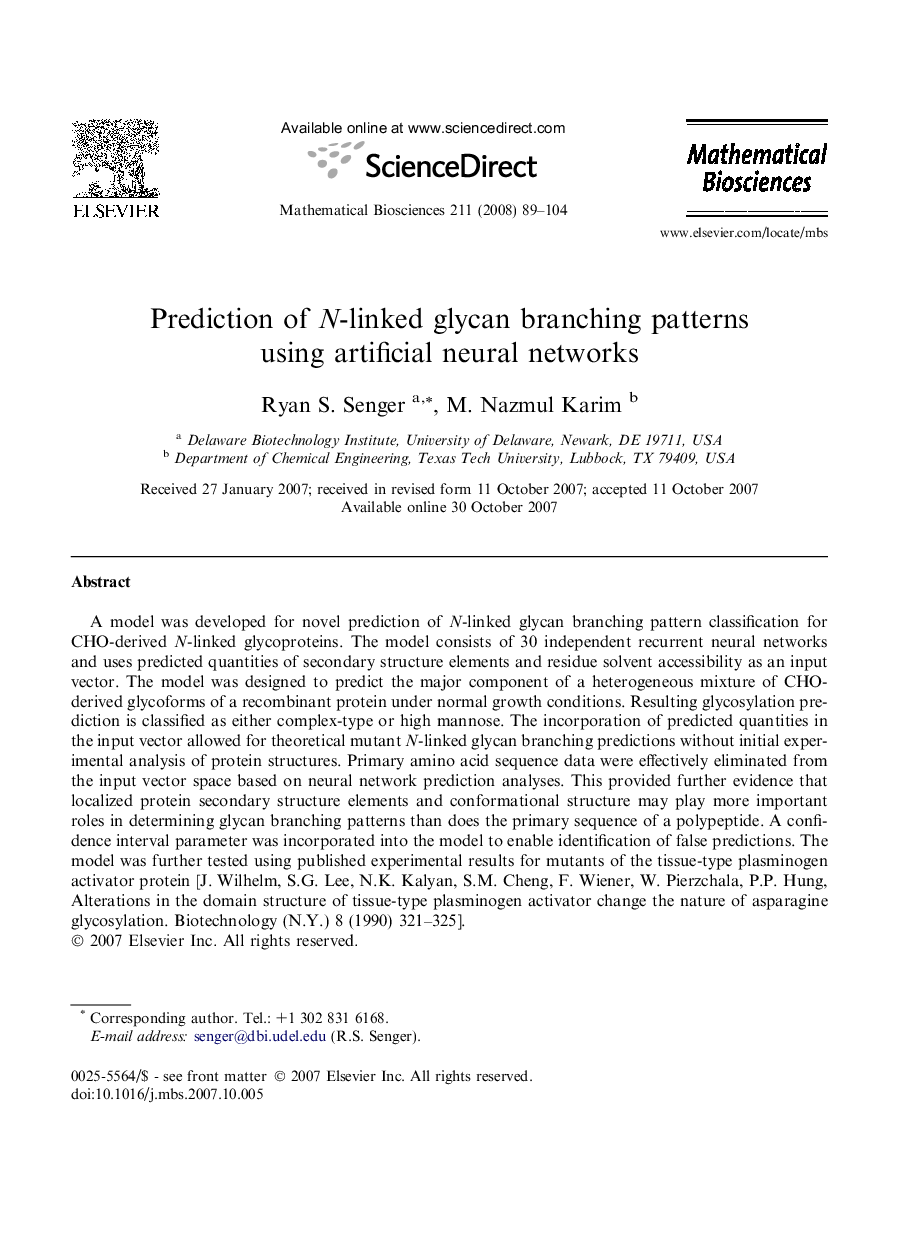| Article ID | Journal | Published Year | Pages | File Type |
|---|---|---|---|---|
| 4500871 | Mathematical Biosciences | 2008 | 16 Pages |
A model was developed for novel prediction of N-linked glycan branching pattern classification for CHO-derived N-linked glycoproteins. The model consists of 30 independent recurrent neural networks and uses predicted quantities of secondary structure elements and residue solvent accessibility as an input vector. The model was designed to predict the major component of a heterogeneous mixture of CHO-derived glycoforms of a recombinant protein under normal growth conditions. Resulting glycosylation prediction is classified as either complex-type or high mannose. The incorporation of predicted quantities in the input vector allowed for theoretical mutant N-linked glycan branching predictions without initial experimental analysis of protein structures. Primary amino acid sequence data were effectively eliminated from the input vector space based on neural network prediction analyses. This provided further evidence that localized protein secondary structure elements and conformational structure may play more important roles in determining glycan branching patterns than does the primary sequence of a polypeptide. A confidence interval parameter was incorporated into the model to enable identification of false predictions. The model was further tested using published experimental results for mutants of the tissue-type plasminogen activator protein [J. Wilhelm, S.G. Lee, N.K. Kalyan, S.M. Cheng, F. Wiener, W. Pierzchala, P.P. Hung, Alterations in the domain structure of tissue-type plasminogen activator change the nature of asparagine glycosylation. Biotechnology (N.Y.) 8 (1990) 321–325].
